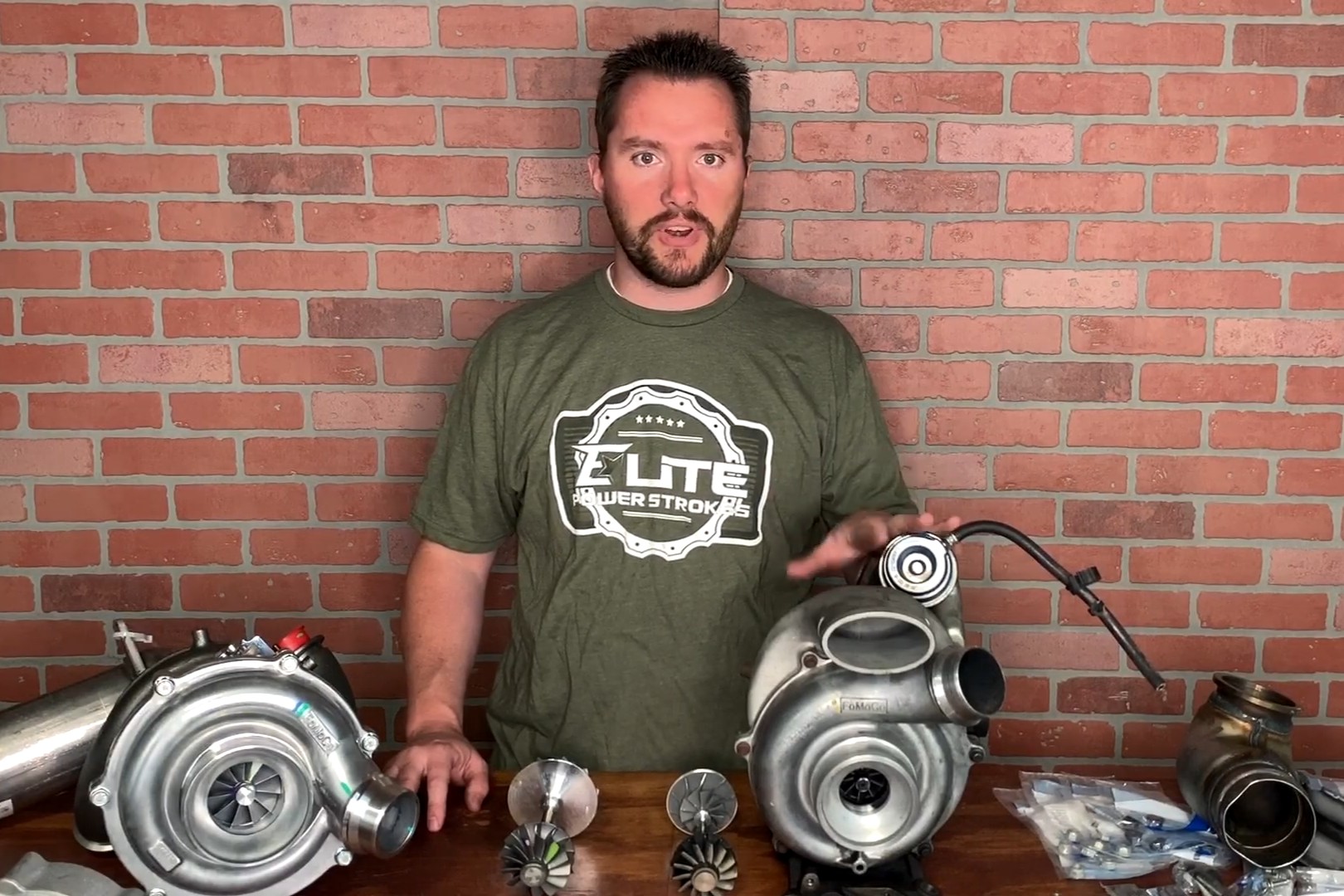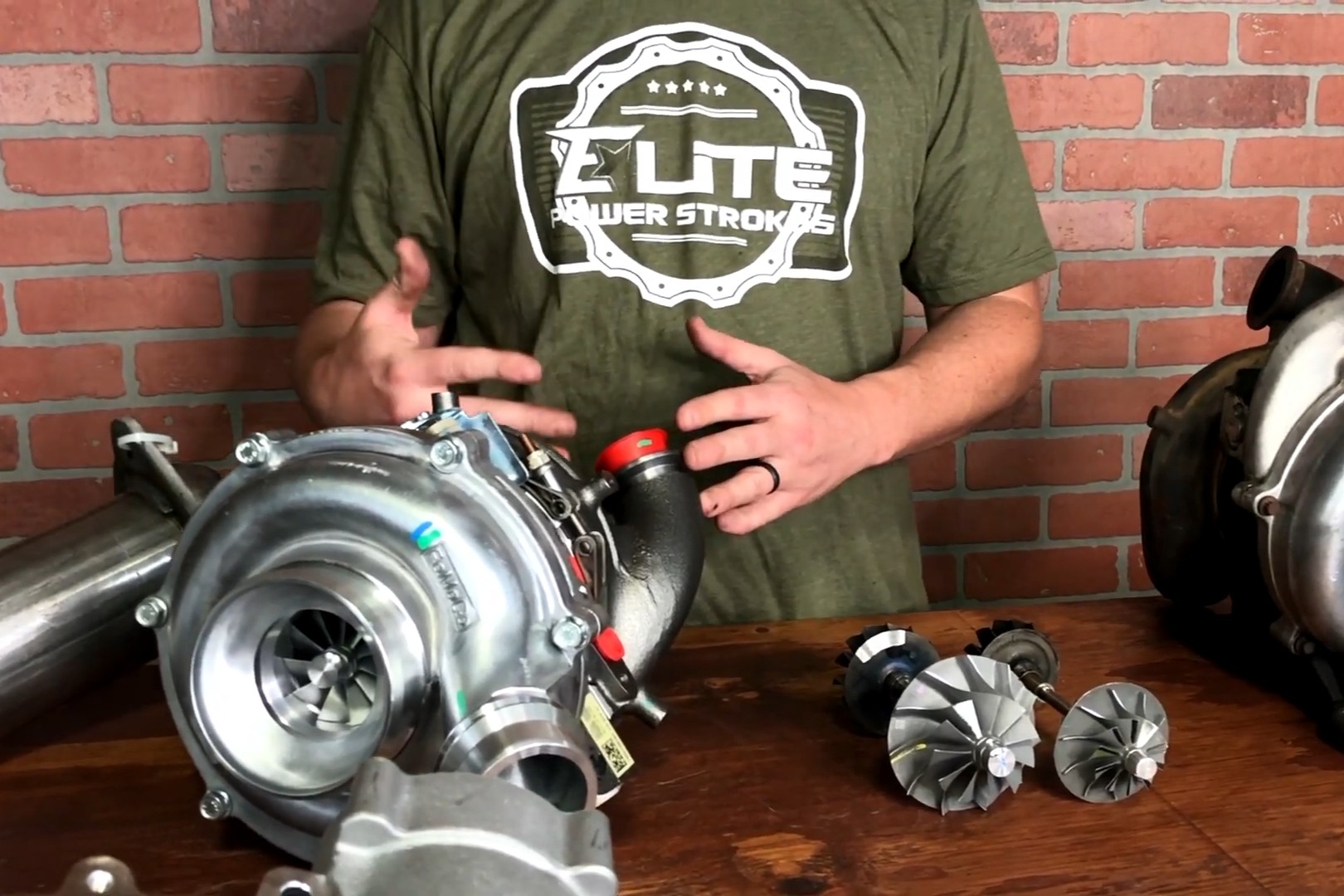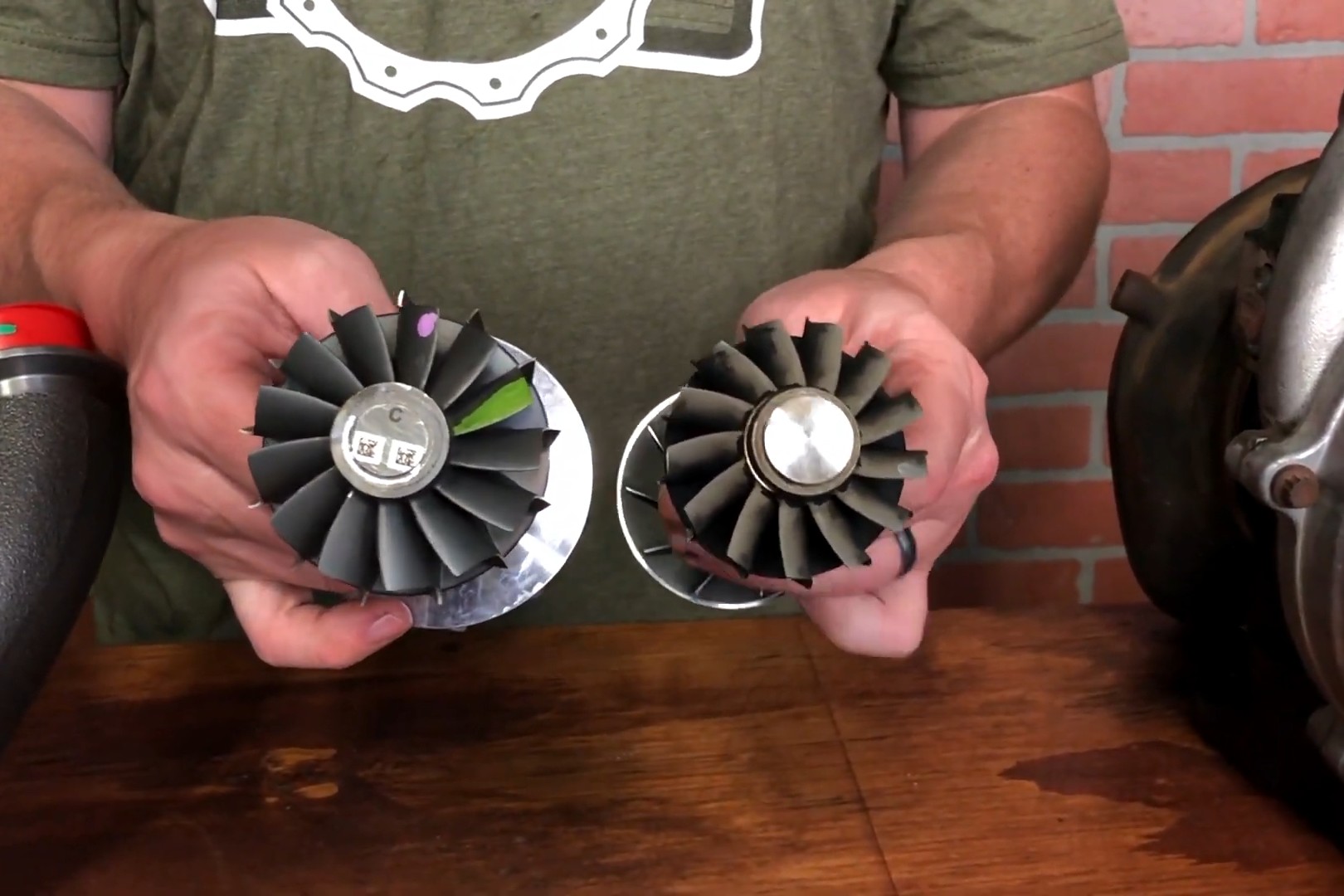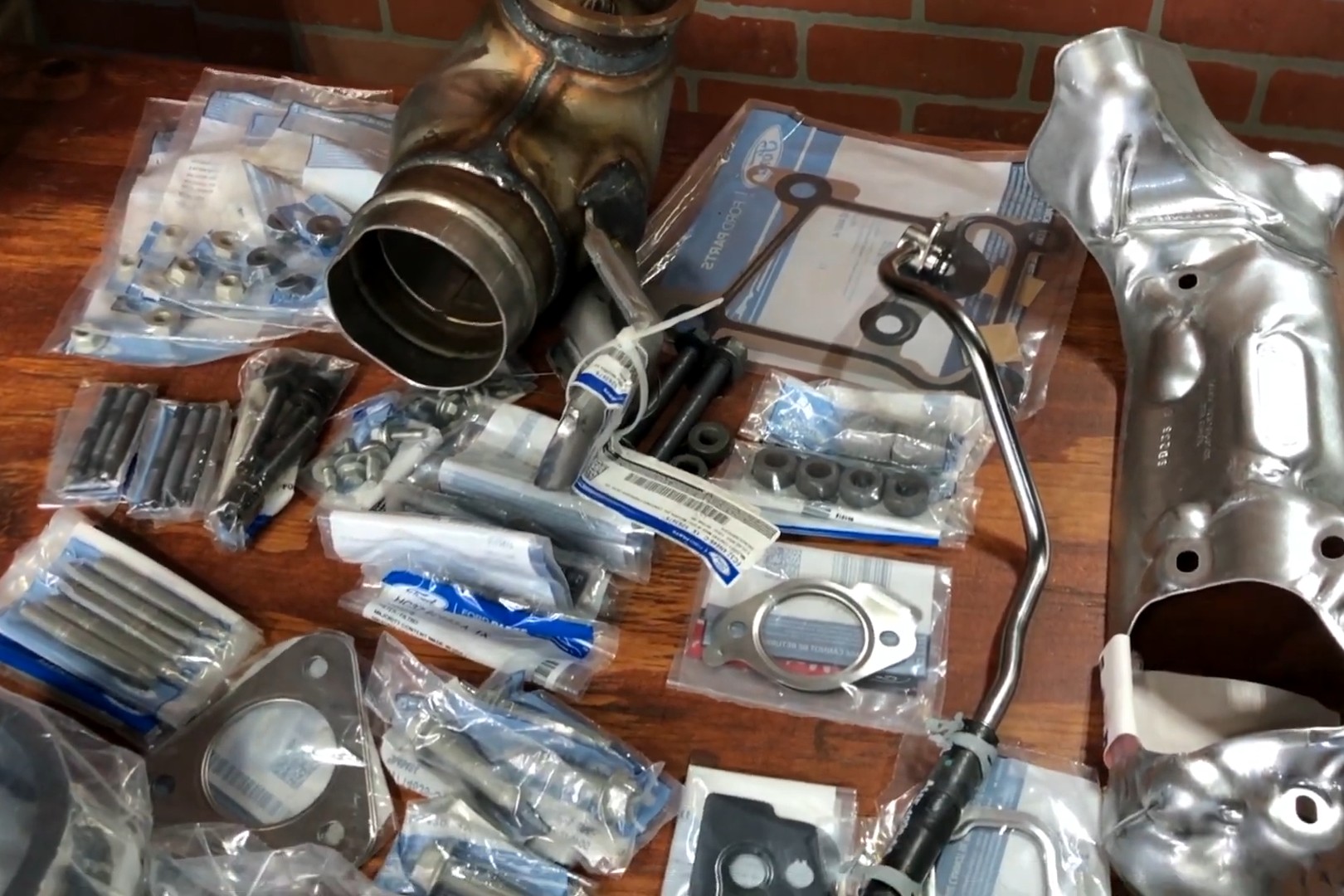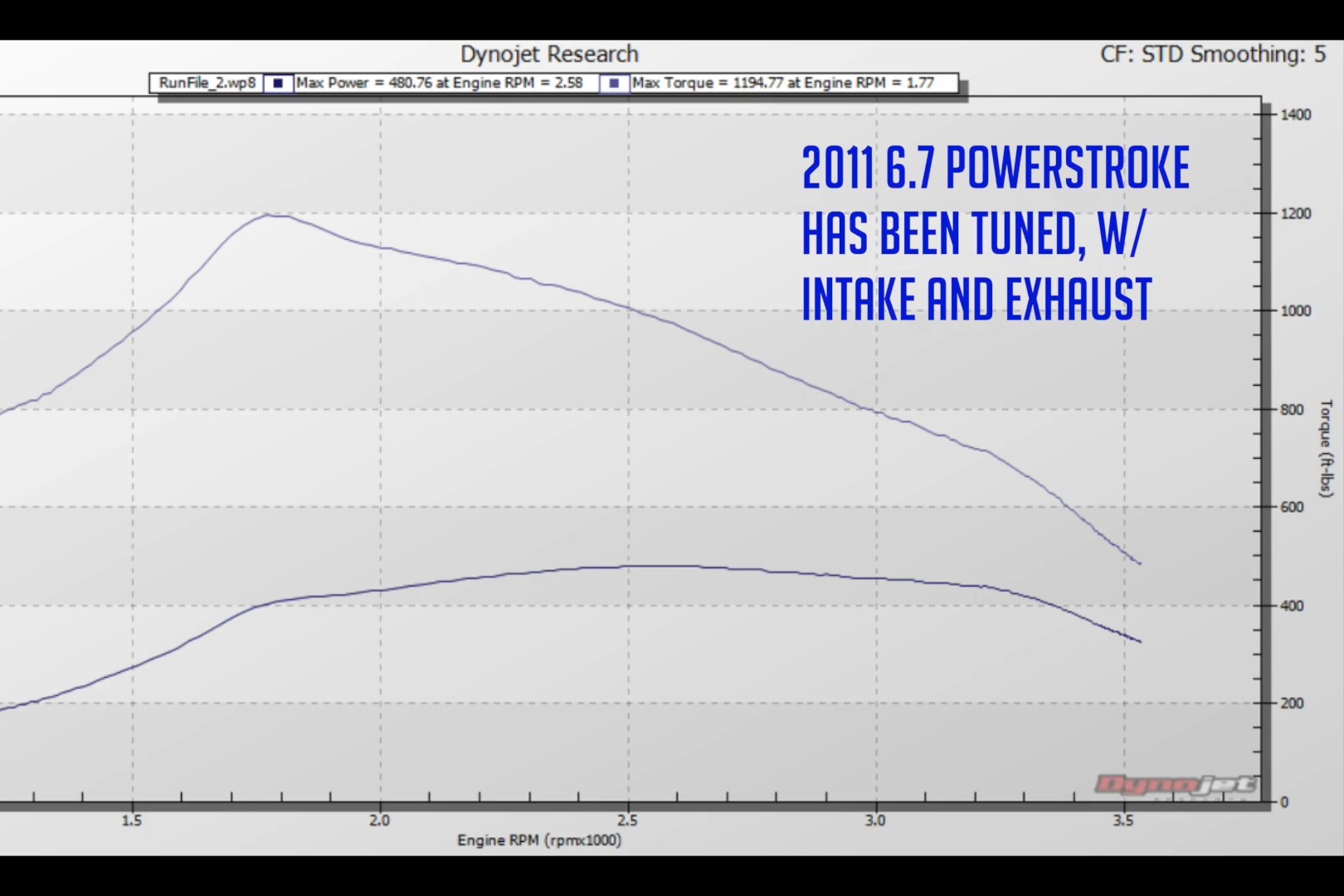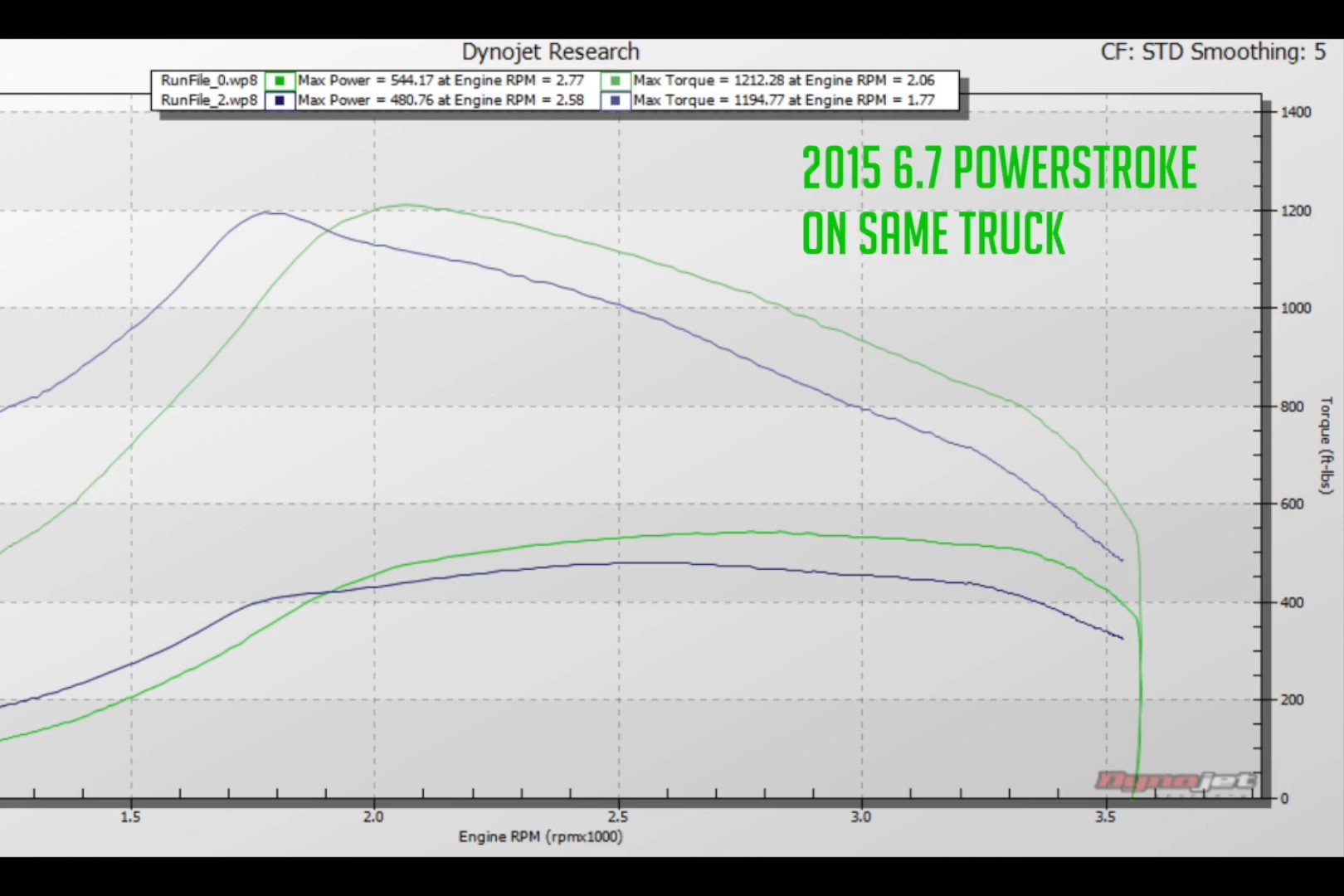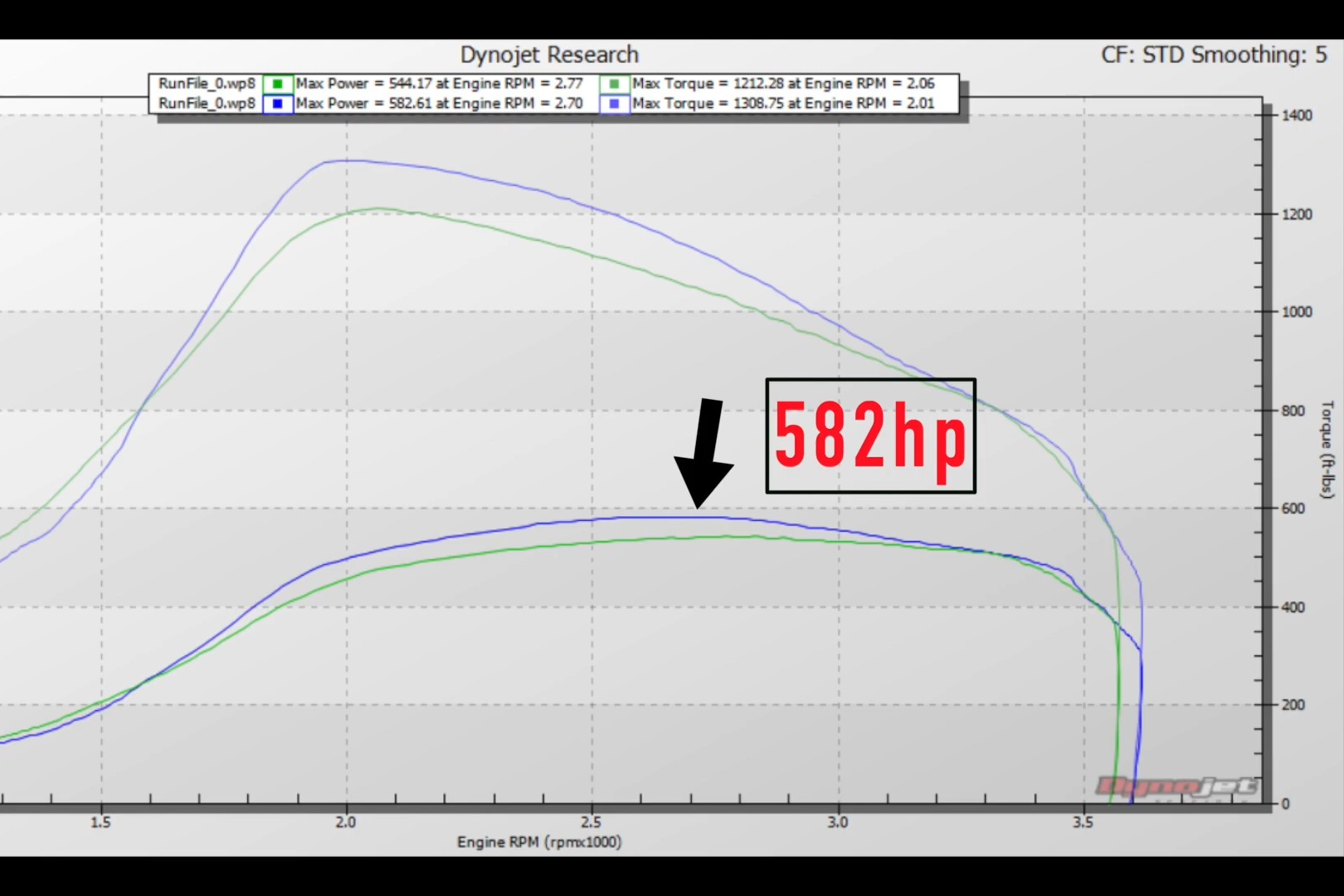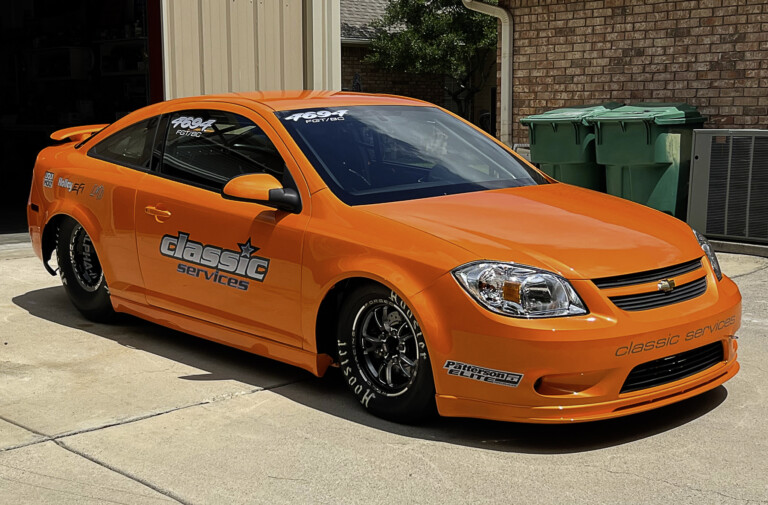Anyone familiar with the platform knows the 2011-2014 Ford 6.7-liter Power Stroke’s biggest claim to fame was its Garrett Single Sequential Turbo (SST). It had a single turbine with dual compressor wheels to optimize performance across a wider range of RPM or shaft speed. The GT32 SST had dual ball bearings and a variable geometry turbine housing. It was an engineering marvel. It was even mounted practically right to the heads to spool up as fast as possible. Unfortunately, the tech didn’t exactly pan out where the rubber meets the road.
KC Turbos, in one of its videos, breaks down the popular 2015+ 6.7-liter Power Stroke Turbo Retro-Fit Kit, explaining exactly why so many 6.7-liter owners are making the switch to the more traditional GT37 used in the later model versions.
As Charlie Fish of KC Turbos puts it, the 2011-2014 turbo “lacked a lot of top-end power, they were not super reliable, and they had a lot of longevity issues, especially if you throw on a tuner and start pushing them hard.”
The 2015+ turbo, in contrast, uses a more conventional design. It features a single-plane compressor wheel and journal bearings, a design reminiscent of the 2003-06 6.0-liter Power Stroke.
This simpler design, according to Fish, “was not only more reliable and more robust, it’s a lot bigger.” This size increase translates directly to increased airflow and power potential.
But the benefits go beyond just swapping the turbo itself. Charlie highlighted the Ford Racing Power Stroke retro-fit kit, which uses all genuine Ford OEM parts. He commented, “basically included every exhaust manifold stud, every basket, all the heat shield, new coolant line, cobra head, pedestals, downpipe, turbo, everything you need for the swap.”
The performance gains are clearly illustrated with dyno graphs. A tuned 2011 truck with the stock turbo might make around 480 horsepower. Swapping to the 2015+ turbo, even on the 2011 fueling, bumps that number to roughly 544 horsepower.
The real magic happens when you pair the 2015+ turbo with the upgraded 2015+ high-pressure fuel pump, pushing output to around 582 horsepower and 1,308 ft-lbs of torque. “The whole upper RPM range is increased,” Fish noted.
So, is this upgrade completely free from drawbacks? Not quite. The larger 2015+ turbo does spool up slightly slower, about 300 RPM later than the original. According to Charlie, you might notice “A little bit of smoke and…lag” when lugging the engine at very low RPM.
However, the gains in top-end power and overall reliability, especially for those planning further modifications, make the 2015+ turbo retro-fit kit a good option for many 2011-14 6.7-liter Power Stroke owners wanting a performance boost. And, of course, if a warranty isn’t a concern, you could also opt to upgrade the compressor wheel to something from KC’s lineup as well.



